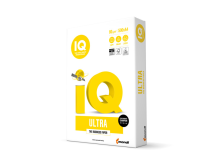It should not come as a surprise to anyone with an interest in print that packaging is experiencing a golden age. Rising at a steady 2.9% year-on-year, Smithers Pira forecasts the global market will be worth some R12 trillion ($980 billion by 2022) (1). If you drill down further, growth of the flexible packaging sector is even more pronounced. With a predicted annual growth rate of 4.3%, by 2022 it should claim a healthy R3 trillion ($283 billion) share (2).
While digital media alternatives have negatively influenced many print sectors, for packaging it’s a positive, if disruptive, factor. There is no digital alternative to packaging. But as online media encourages purchase decisions to be increasingly image-led, and online sales continue to grow with no signs of abating, packaging becomes more and more crucial. Providing an essential billboard for brands, who face fierce competition whether their storefront is bricks-and-mortar or online, packaging must equally be practical and economical for transportation. While the status-quo is disrupted, there’s opportunity for those who want to grasp it.
Food packaging represents the majority of flexible packaging applications. Barrier properties can be tailored to keep food safe and appetising. Being lightweight and using less material, it’s more economical to produce and transport.
Busy, hectic lifestyles have many of us reaching for pre-portioned, pre-peeled, pre-sliced or pre-cooked foods; anything to make the job of putting a meal on the table a little quicker and easier. For those who don’t even make it to the table, there’s a vast range of portable alternatives. As obesity figures rise, portion control help comes in the form of different sized packaging. All this need for convenience is a significant factor in growing flexible packaging sales.
As marketers look for new ways to grab attention and consumers demand more choice, there’s a growing SKU count and huge variety in the shape, size and design of products. This doesn’t just apply to food packaging, other significant sectors in flexible packaging including beverages, cosmetics and toiletries, pharmaceuticals and medical, pet food, tobacco and other non-food products see the same trend.
Smaller print volumes are increasingly sought after as each product comes in more varieties, design changes are made frequently, and brands want to reduce warehousing requirements. As the trend continues, printers should consider offset as an alternative to the flexo and gravure industry standards. Offset provides the exceptional quality demanded by brands that digital cannot yet reach, without incurring the expensive set-up costs associated with flexo and rotogravure. Short run-lengths become practical and economical, but longer run lengths are not discounted either.
(1) The Future of Global Packaging to 2022, Smithers Pira, 2017.
(2) The Future of Flexible Packaging to 2022, Smithers Pira, 2017.





















